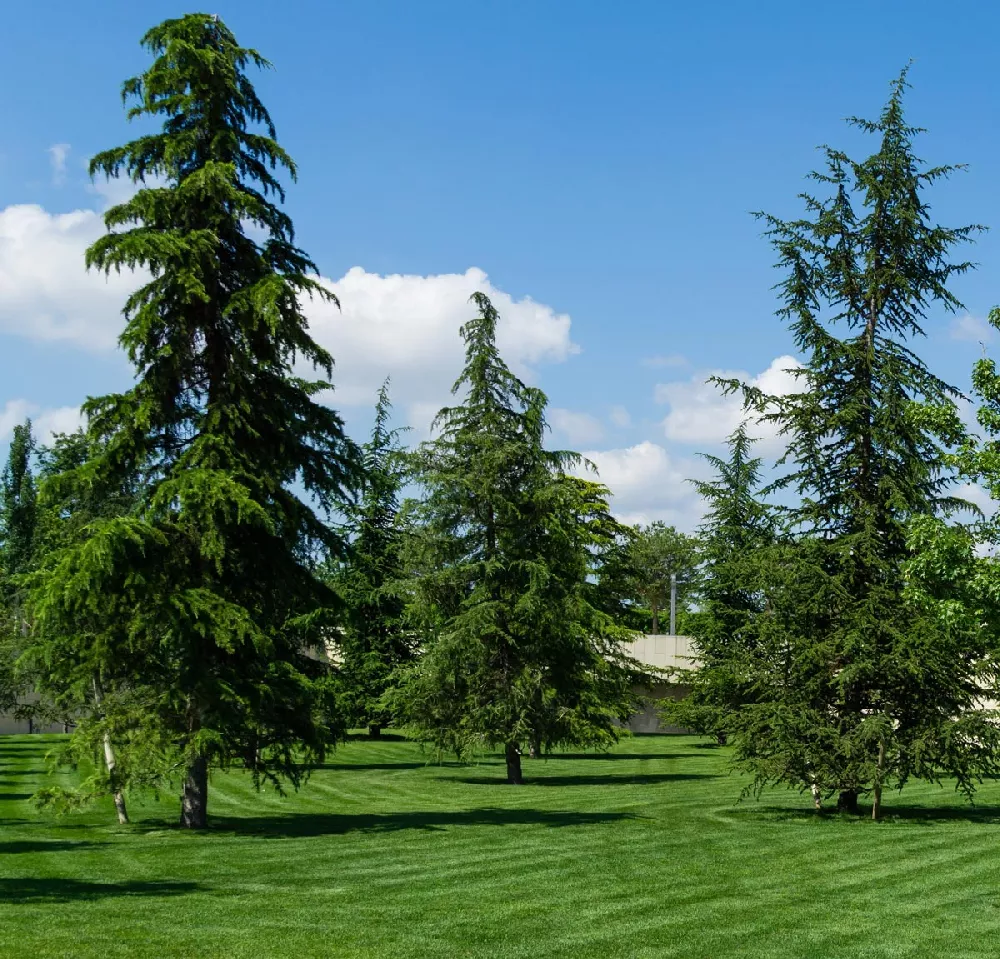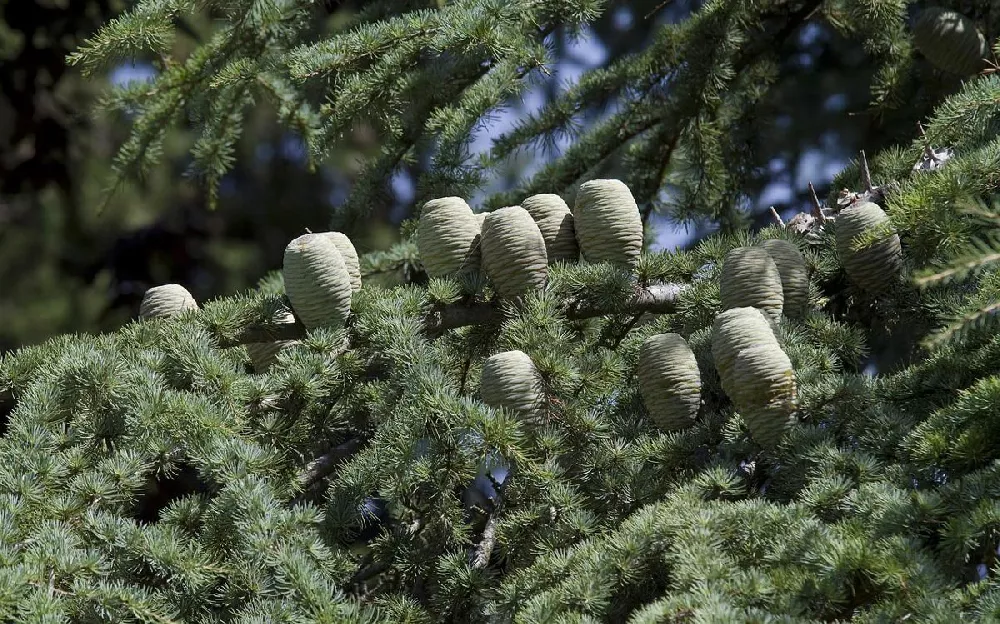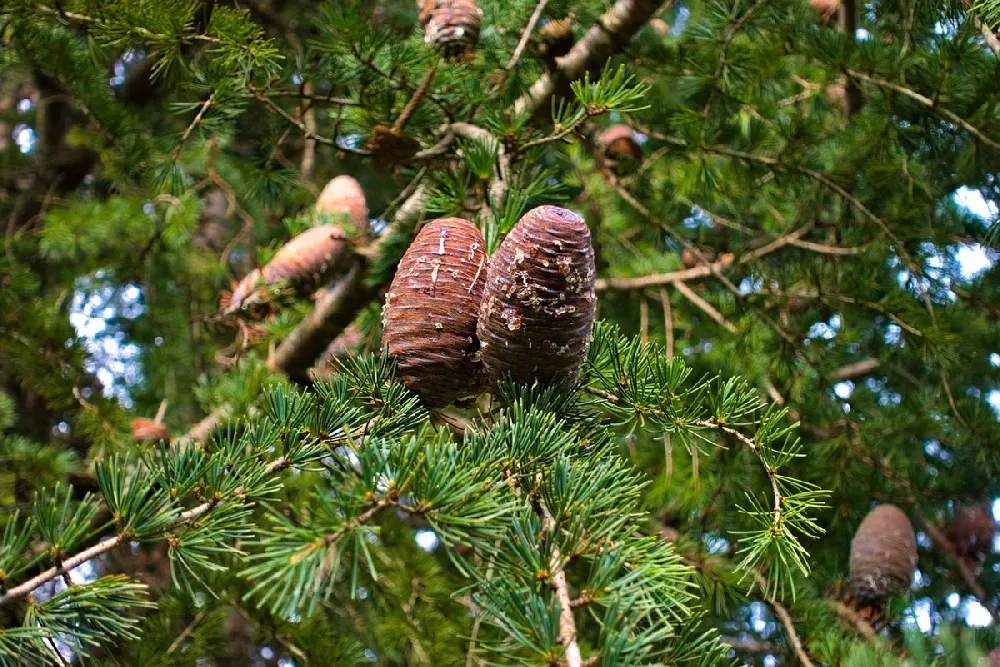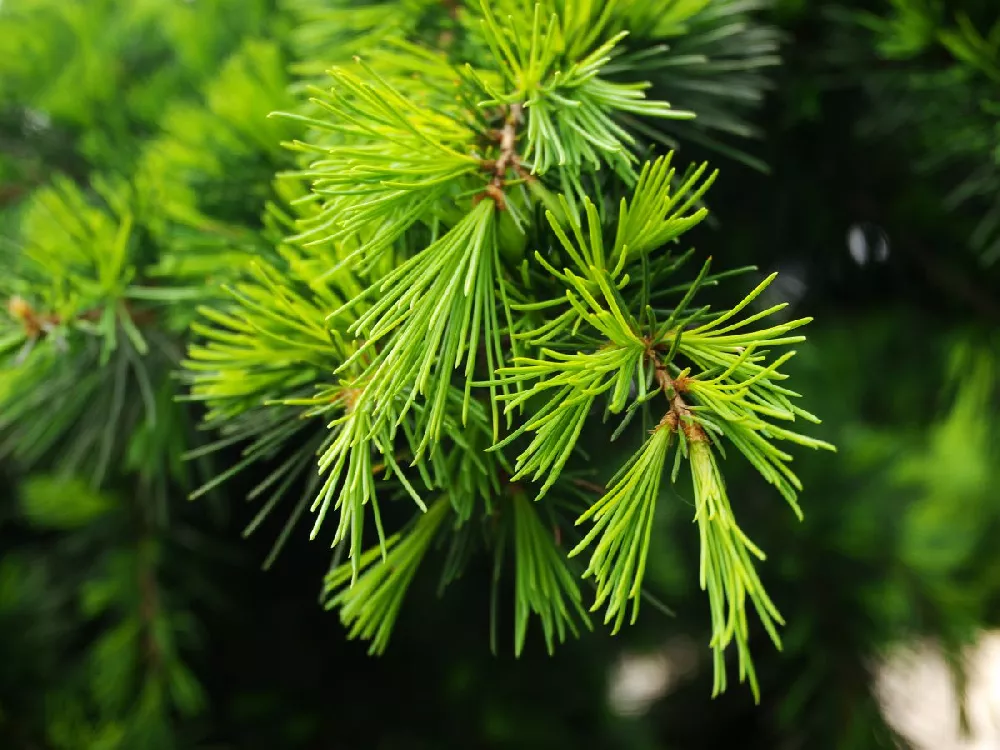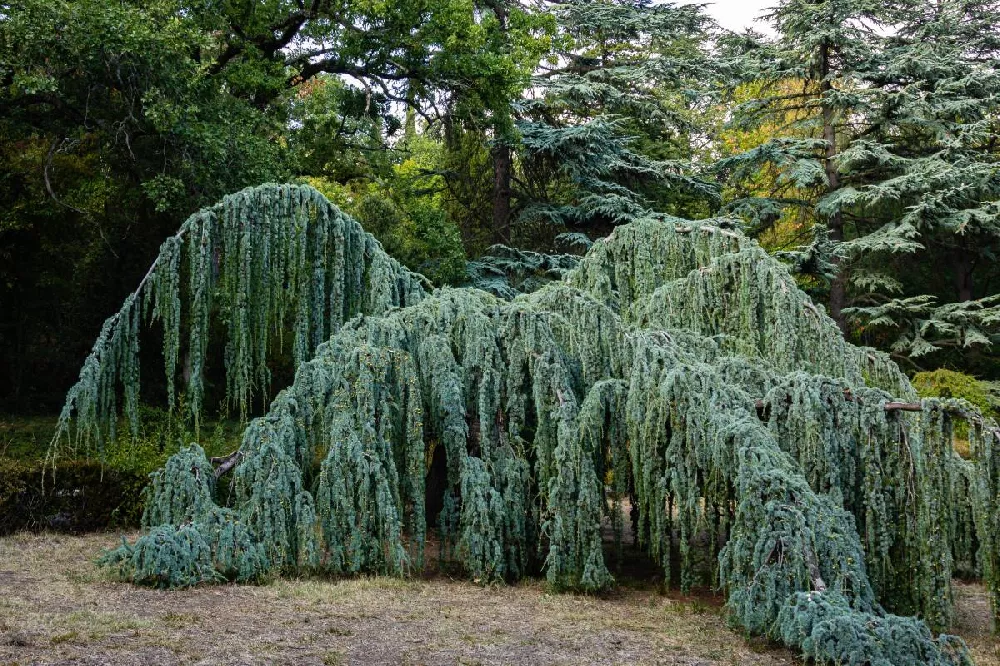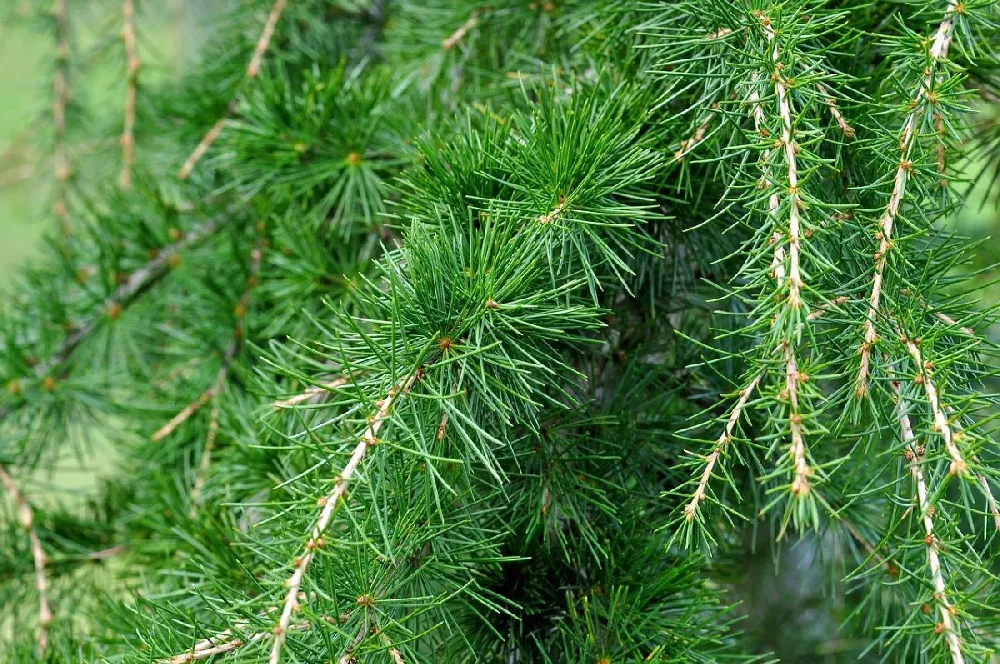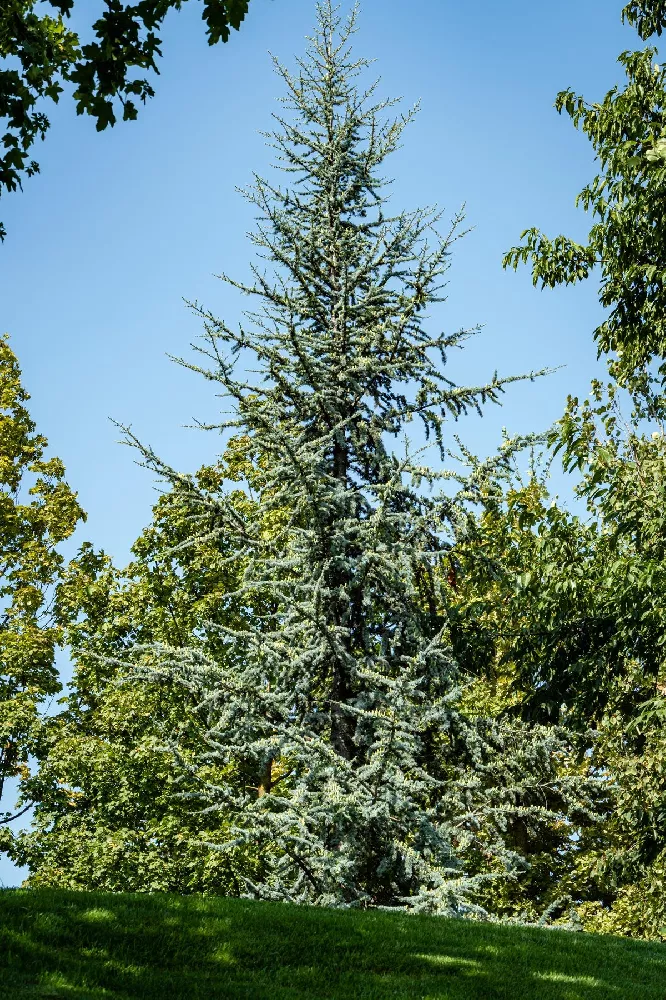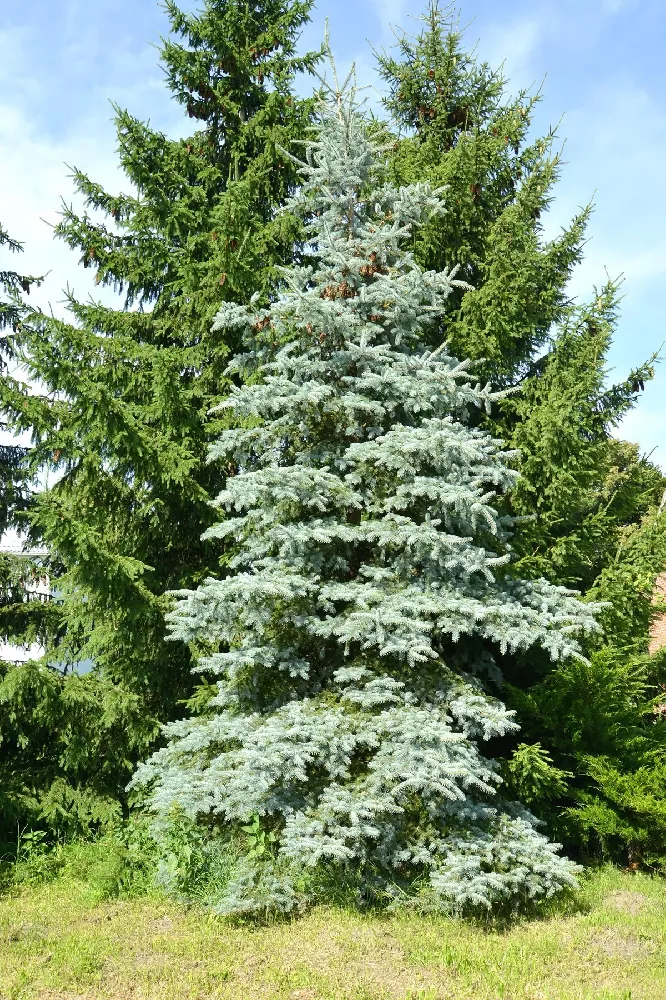- Home >
- Evergreen Trees >
- Cedar Deodar
Cedar Deodar for Sale - Buying & Growing Guide
- Ships in 1-2 days
- 1-Year Warranty Eligible
- Pots or accessories are not included unless specified in the product options.
Shipping Details:
Products shipped through FastGrowingTrees.com. Once your order is shipped, you’ll receive an email with a tracking number and estimated delivery date. Most orders will ship immediately.
A classic, stately evergreen, the deodar cedar tree can reach up to 70 feet tall with a spread of 40 feet — so it has an impact wherever it is placed. This fast-growing tree is sometimes used as a windbreak or privacy screen, but it also makes an excellent specimen tree in a larger landscape, where three or five gathered together are an elegant sight. The deodar cedar tree, also known as Cedrus deodara, couldn't be easier to care for. It is pest- and disease-resistant, needs little pruning, and adapts well to just about any type of soil. It grows best in the southern U.S. and Pacific Northwest regions, and it is hardy down to 10 degrees Fahrenheit. Here are a few more reasons to plant a deodar cedar in your own garden:
- The silvery-green 2-inch needles provide a pleasingly soft textural look to the tree.
- Graceful branches dip down before rising upwards at the tip.
- Once established, the deodar cedar is drought-resistant and needs little supplemental watering.
Plant Care
Sunlight

Deodar cedars grow best in full sun, with six or more hours of direct light a day.
Watering
Water lightly when experiencing heat or drought; deodar cedars don't like wet feet, so avoid overwatering.
Fertilizing

Fertilize in early spring and mid-fall with a balanced product, such as a 10-10-10 formula.
Planting and Care
Planting instructions
Site your tree where it will get full sun in soil that drains well. Take into consideration the full 40-foot width of a mature deodar cedar, as well, and be careful not to plant it too close to buildings or under overhead wiring. Unpot your sapling and tease out any encircling roots, which can girdle the tree and eventually kill it. Dig a hole as deep as the root ball and two to three times as wide. Add a few handfuls of well-rotted manure or compost to the bottom of the hole, and place the tree on top of it. Holding the tree steady and upright, fill in around it with topsoil, tamping down as you go to eliminate air pockets. Water thoroughly. Add a 2- to 3-inch layer of an organic mulch, such as bark chips, to conserve moisture, being careful that it does not touch the trunk itself.
Watering and nutrients
Water your newly-planted deodar cedar weekly until it is well establishing and showing signs of robust growth. You can then taper off supplemental watering unless you’re experiencing a drought or extreme heat. Avoid overwatering, which can lead to root rot. Feed your tree in spring and fall with a balanced, slow-release fertilizer, such as a 10-10-10 formula.
Pollination
Deodar cedars are monoecious, meaning that male and female reproductive parts are on the same tree. As a conifer, cedars have cones rather than flowers. On the deodar cedar, male cones are generally located near the bottom of the tree and give off pollen in the fall. Female cones are on the upper branches and are pollinated by wind. A year later, the female cones mature and seeds are released.
Pruning
Deodar cedars need no regular annual pruning. Your only pruning task is to monitor your tree for dead, diseased, or damaged branches, trimming them out when you see them.
Pests and diseases
The deodar cedar releases a naturally aromatic oil through its leaves that deters many insect pests. Once in a while you may see signs of scale insects, borers, weevils, or bagworms. These can be controlled with beneficial insects or, as a last resort, insecticides. A healthy tree, however, should be able to fend off mild infestations. Deodar cedars may be prone to the occasional fungal infection, and they may also experience some top and branch tip dieback near the northern parts of their range after a particularly cold winter.
Achieving maximum results
Since they are large trees, deodar cedars might not be the right choice for you if you own an eighth of an acre in the city. For those with larger spaces to fill, however, an attractive backdrop to other plantings can be made by planting multiple deodar cedars in an informal grouping near the back of a large lawn, for example. An attractive option could be to place the cedars near the back border of the property and plant shorter flowering trees, such as magnolias or crabapples, in front, with bedding plants filling in before them. Deodar cedars would also make a nice border at the edges of a long driveway, but be careful to place them far enough away from the road that the mature tree won’t impede the progress of passing cars.
FAQs
What kind of soil is best for my deodar cedar?
There are few trees that are as accommodating as the deodar cedar when it comes to preferred soil. The trees grow well in clay, sand, and loamy soil. They can handle soil that is slightly alkaline, but also soil that leans acidic. About the only thing they don't like is to stand in a puddle, so it's best to plant them in soil that drains quickly and well.
How fast does the deodar cedar grow?
The deodar cedar is a fast grower and can add 1 to 2 feet of height a year until reaching its maximum height of 40 to 70 feet tall. Even then, the tree will continue to widen out over time, reaching a maximum of 40 feet in width. Interestingly enough, in its native Himalayan highlands, the deodar cedar can grow up to 200 feet in height.
Are deodar cedars messy?
Not really. They do drop needles slowly, as opposed to deciduous trees that drop their leaves at once in fall. Deodar cedars also emit pollen from the male cones, which can leave a film on nearby cars and windows, and the male cones drop after their pollen is released — so you may need to rake up some tree debris occasionally.
Compare Similar Products
Customer Reviews
 Deodar
DeodarVery pleased nice tree
 Deodar Cedar Tree
Deodar Cedar TreeThe overall experience with the trees were good. They did however arrive a little later than expected. I put them in the ground the next day so we wait now. I don't believe they are worth the 16.95 for such a small plant. But overall they were healthy.
 Eager to grow
Eager to growProfessional and personal. Still placing orders
 Faith and Hope
Faith and HopeSo far so good!! We aren't in your appropriate growing zone, we have a cypress tree, that grew well! Very sandy.....been planted a week so far and the branches have grown about 4 inches!! Shioped with care also!!
You can't add more Product Name - Product size to the cart.
OK